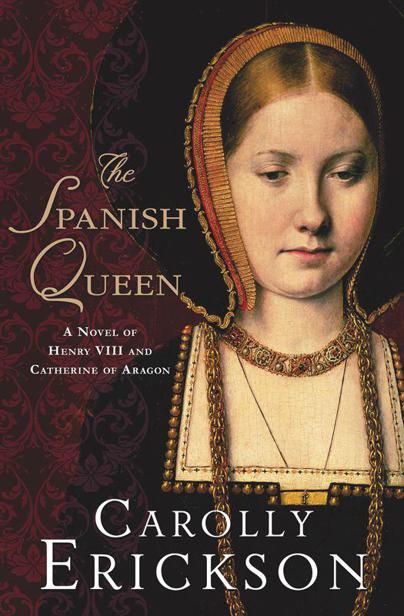
The Spanish Queen
A Novel of Henry VIII and Catherine of Aragon
کتاب های مرتبط
- اطلاعات
- نقد و بررسی
- دیدگاه کاربران
نقد و بررسی

September 15, 2013
Catherine of Aragon does not go down without a fight in Erickson's sympathetic rendering. Portrayed as a hapless pawn of power plays and circumstance in so many other Tudor historical novels, Catherine here displays the mettle of her ruthless royal forbears Isabella and Ferdinand. But that does not mean that fate and rivals are not out to get her. Betrothed from toddlerhood to Arthur, heir apparent of Tudor dynasty founder Henry VII, it first appears that Catherine has beaten the royal marriage odds: There is actually affinity and attraction between her and her intended. But once married, her hopes are soon dashed: Prince Arthur is so sickly that the marriage cannot be consummated. His untimely death places Catherine in a dangerous limbo: She can't return home, and the increasingly demented Henry VII won't approve her marriage to his second son, Henry. After his father dies, Henry VIII eagerly weds the beautiful but older Catherine. She proves herself a worthy queen when, while Henry is engaged in a largely symbolic skirmish with the French, she wins a decisive battle against the Scots. However, she fails in her primary duty to produce a living prince. After six pregnancies and difficult deliveries, only daughter Mary survives, and unlike the Spanish, the English do not exalt female heirs. Although Henry's antipathy toward Catherine began with her Scottish triumph, his infatuation with cunning courtier Anne Boleyn accelerates his desire for a divorce that will upend Christendom. Catherine's Spanish relatives are no help: When they're not spreading vicious rumors about her, they are supporting Henry VIII's argument that his marriage to his brother's widow was an abomination, grounds for annulling the union under canon law. When the king weds Boleyn, the English people continue to clamor for Catherine's restoration. Although even Erickson's fact-bending "historical entertainment" cannot alter the grim outcome, Catherine's ordeal is so sensitively recreated that readers will still hope for a different ending. A vivid evocation of a queen who refused to be written off.
COPYRIGHT(2013) Kirkus Reviews, ALL RIGHTS RESERVED.

September 15, 2013
In her ninth work of historical fiction (after The Unfaithful Queen), Erickson tackles Catherine of Aragon, Henry VIII's first wife. Although Catherine's story has been told many times by other novelists, Erickson succeeds with this fresh and sympathetic reinterpretation of the Spanish princess's life, mainly by instilling a spirit and spine in Queen Catherine, unlike other authors. Although following the historical events that most fans of Tudor historical fiction know like the backs of their hands, the novel is fast-paced and adds subtle elements of surprise (who knew that the queen had a vengeful streak?) that will please even the most avid of the genre's readers. VERDICT Devotees of Erickson's work and of the Tudors will happily add this book to their to-read lists. [See Prepub Alert 4/8/13.]--Audrey Jones, Washington, DC
Copyright 2013 Library Journal, LLC Used with permission.

























دیدگاه کاربران